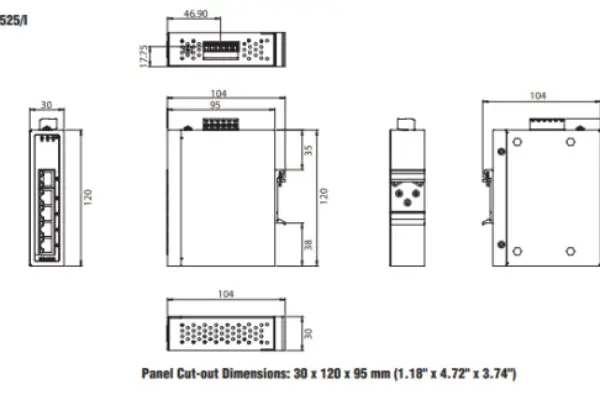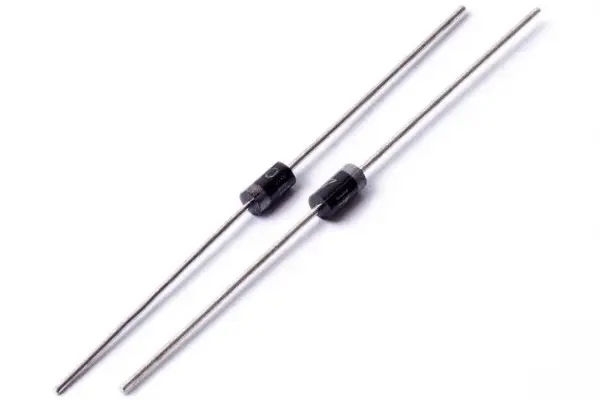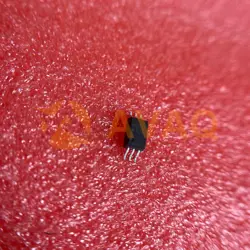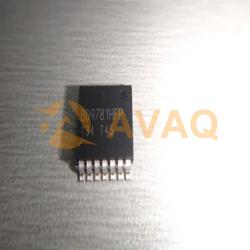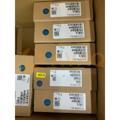LMS7002M Lime Microsystems: Datasheet, Features and Price 2023
 Published: Sep 20, 2023
Published: Sep 20, 2023
Contents
In the dynamic world of software-defined radio (SDR) and wireless communications, the LMS7002M from Lime Microsystems stands out as a versatile and powerful integrated circuit. Designed to meet the demands of cutting-edge applications, the LMS7002M is at the forefront of enabling flexible and adaptable wireless solutions.
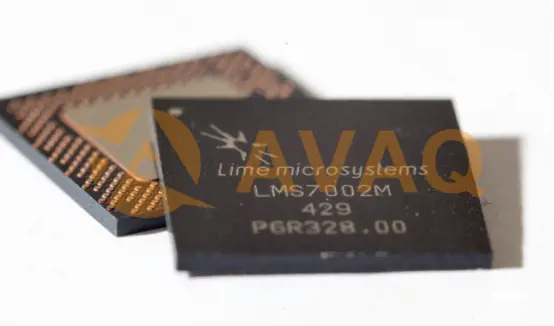
In this article, we will take an in-depth look at the Datasheet, Features, and Price of the LMS7002M, shedding light on its capabilities and how it's shaping the future of wireless communications.
LMS7002M Overview
Lime Microsystems' LMS7002M RF transceiver combines a low noise amplifier (RXLNA), TX power amplifier driver (TXPAD), receiver/transmitter (TX/RX) mixer, TX/RX filter, frequency synthesizer, RX gain control, TX power control, analog-to-digital and digital-to-analog converter (ADC/DAC). The device is designed to require very few external components.
The device utilizes an advanced transceiver design based on CMOS technology to significantly reduce cost and power consumption. The device integrates a dual transceiver architecture to support 2 x 2 MIMO, as well as significant on-chip digital features.
The LMS7002M operates on any mobile standard, including Wi-Fi, and all variants of 2G, 3G and 4G, and commonly used mobile frequencies (licensed or unlicensed), making it ideal for any wireless communications and broadband project.
The EVB7 module is a high-speed wireless communication module based on the LMS7002M fully programmable RF transceiver. It is designed to support 2G, 3G, and 4G/LTE radio systems with Time Division Duplex (TDD) and Frequency Division Duplex (FDD) applications, M2M, and Software Defined Radio.
The radio communication module covers the 100 kHz to 3.8 GHz band, including both license-required and license-free bands. Channel bandwidths below 100 kHz and up to 108 MHz can be programmed using easy-to-use GUI software and by combining analog and digital filtering.
RF Transceiver IC
A Radio Frequency (RF) Transceiver Integrated Circuit (IC) is a semiconductor device designed to transmit and receive radio frequency signals in various wireless communication systems. It combines the functionalities of a transmitter (Tx) and a receiver (Rx) within a single chip, enabling two-way communication over wireless channels. RF transceiver ICs are a fundamental component in modern communication devices and systems, including cell phones, Wi-Fi routers, Bluetooth devices, and many other wireless technologies.
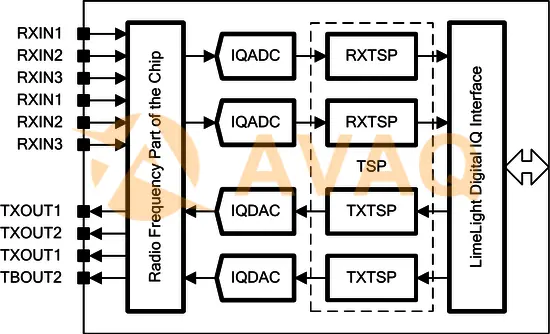
LMS7002M Specifications
|
Attribute |
Value |
|
Manufacturer |
Lime |
|
Product Type |
RF Transceiver |
|
RoHS |
Details available |
|
Type |
Multiband |
|
Frequency Range |
100 kHz to 3.8 GHz |
|
Minimum Supply Voltage |
1.1 V |
|
Maximum Supply Voltage |
1.3 V |
|
Receive Supply Current |
420 mA |
|
Transmit Supply Current |
350 mA |
|
Output Power |
0 dBm |
|
Min Operating Temp |
-40°C |
|
Max Operating Temp |
+85°C |
|
Interface Type |
Serial |
|
Package / Case |
QFN-261 |
|
Packaging |
Reel |
|
Brand |
Lime Microsystems |
|
Dimensions |
11.5 mm x 11.5 mm |
|
Moisture Sensitivity |
Yes |
|
Mounting Style |
SMD/SMT |
|
Number of Receivers |
3 Receiver |
|
Number of Transmitters |
2 Transmitter |
|
Operating Supply Voltage |
1.2 V |
|
Product Category |
RF Transceiver |
|
Series |
LMS7002M |
|
Subcategory |
Wireless & RF Integrated Circuits |
|
Technology |
Si (Silicon) |
|
Unit Weight |
1.100 g |
LMS7002M Features
The LMS7002M RF transceiver chip from Lime Microsystems offers a range of features and capabilities that make it a versatile and flexible component for various RF and wireless communication applications. Here are the key features of the LMS7002M:
- Transceiver Functionality: The LMS7002M integrates both transmitter (Tx) and receiver (Rx) functions within a single chip, simplifying the design of RF systems.
- Wide Frequency Range: It supports a wide frequency range, typically spanning from 100 kHz to 3.8 GHz, making it suitable for a variety of frequency bands and communication standards.
- Multiband Operation: The chip can operate across multiple frequency bands and is adaptable to different communication standards, including cellular, Wi-Fi, and more.
- Multiple Transmit and Receive Channels: It offers multiple transmitter and receiver channels, providing flexibility for MIMO (Multiple Input, Multiple Output) and other advanced communication techniques.
- Wideband Capability: It is capable of handling wideband signals, allowing for applications that require a significant bandwidth, such as software-defined radios (SDRs).
- Digital Interface: The chip features a digital interface that can be controlled and configured via software, enabling easy integration into SDR platforms and digital signal processing.
- MIMO Support: It supports MIMO configurations, allowing for improved data rates and reliability in modern wireless communication systems.
- Highly Configurable: It is highly configurable, enabling users to adjust various parameters such as filtering, gain control, and modulation schemes to meet specific system requirements.
- Open Source Support: Lime Microsystems provides open-source software tools, drivers, and FPGA reference designs, fostering a collaborative environment for development and experimentation.
- Compact Form Factor: The chip is designed in a compact form factor, suitable for integration into various hardware platforms and systems.
- Low Power Consumption: It is designed to be energy-efficient, making it suitable for battery-powered and portable devices.
- Temperature Range: It operates across a wide temperature range, typically from -40°C to +85°C, making it suitable for various environmental conditions.
- Customizable: Developers can use the chip as a building block to create custom RF solutions tailored to their specific applications.
- High Performance: It offers good linearity, dynamic range, and other performance characteristics necessary for high-quality RF communication.
LMS7002M Application
Software-Defined Radios (SDRs): One of the primary applications of the LMS7002M is in SDRs. It provides the flexibility needed to receive and transmit a wide range of radio signals, making it suitable for hobbyists, researchers, and professionals working on SDR projects.
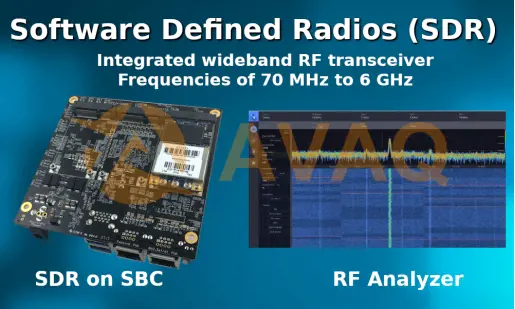
Cellular Base Stations: The LMS7002M can be used in the design of cellular base stations, including small cells and picocells, where it helps manage multiple frequency bands and modulation schemes.
Wireless Communication Systems: It's used in various wireless communication systems, including point-to-point communication, wireless backhaul, and broadband wireless access (WiMAX, LTE, 5G) systems.
Radar Systems: It can be employed in radar systems, such as weather radar and military radar applications, for its wideband capabilities and signal processing features.
Remote Sensing: In remote sensing applications like satellite communication, Earth observation, and environmental monitoring, it helps capture and process RF signals effectively.
Test and Measurement Equipment: It's used in RF test and measurement equipment, such as spectrum analyzers, signal generators, and network analyzers, due to its wide frequency range and precise control.
IoT and M2M Communication: It is suitable for IoT (Internet of Things) and M2M (Machine-to-Machine) communication devices, as it allows for flexibility in communication standards and frequency bands.
Amateur Radio: HAM radio enthusiasts often use the LMS7002M in their projects to experiment with different frequencies and modes.
Education and Research: The chip is used in educational settings and research institutions for teaching RF and wireless communication concepts and conducting experiments.
Custom RF Solutions: Engineers and developers use the LMS7002M to build custom RF solutions for specific applications where traditional off-the-shelf solutions are not suitable.
Open-Source Projects: It has been embraced by the open-source SDR community, contributing to the development of open-source SDR platforms and projects.
LMS7002M vs AD9361: What are Differences
The LMS7002M and AD9361 are both RF transceiver ICs designed for use in various wireless communication and software-defined radio (SDR) applications.
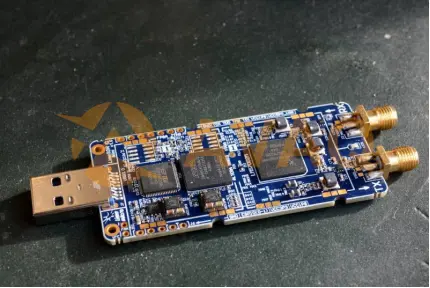
Here's a comparison of the LMS7002M and AD9361,
|
Feature |
LMS7002M |
AD9361 |
|
Manufacturer |
Lime Microsystems |
Analog Devices (ADI) |
|
Frequency Range |
100 kHz to 3.8 GHz |
70 MHz to 6 GHz |
|
Transmit Channels |
2 |
1 |
|
Receive Channels |
2 |
1 |
|
Wideband Capability |
Yes |
Yes |
|
MIMO Support |
Yes |
Yes |
|
Digital Interface |
Yes |
Yes |
|
Open Source Support |
Yes |
Software tools provided |
|
Configurability |
Highly configurable |
Highly integrated |
|
Size |
Compact |
Compact |
|
Operating Voltage |
1.1 V to 1.3 V |
Typically 1.3 V |
LMS7002M Manufacturer
The LMS7002M is manufactured by Lime Microsystems, a UK-based company specializing in field-programmable RF transceivers and associated technologies. Lime Microsystems is known for its contributions to the development of software-defined radios (SDRs) and has gained recognition within the SDR and wireless communication communities for its innovative products and open-source initiatives. The LMS7002M is one of their notable RF transceiver ICs designed to provide flexibility and performance in various RF and wireless communication applications.
LMS7002M Price
Product prices can vary significantly based on factors such as the supplier, quantity ordered, region, and any additional services or features included with the product.
Get the Latest Price from Avaq Semiconductor>>
LMS7002M Datasheet
Free download LMS7002M datasheet here>>
Conclusion
In conclusion, the LMS7002M from Lime Microsystems exemplifies the transformative potential of SDR technology in the world of wireless communications. Its rich feature set, impressive performance, and competitive pricing make it a standout choice for those pushing the boundaries of wireless innovation.
 FAQ
FAQ
- Is there a development board or evaluation kit available for the LMS7002M?
- Lime Microsystems offers development boards and evaluation kits that incorporate the LMS7002M. These kits are designed to help users get started with building SDR systems and experimenting with the IC's capabilities.
- Does the LMS7002M require external components for operation?
- Yes, like many RF transceiver ICs, the LMS7002M typically requires external components such as filters, amplifiers, and antennas to complete a radio system. The specific components needed depend on the application and frequency band.
- Can I use the LMS7002M for cellular communication projects?
- Yes, the LMS7002M can be used in cellular communication projects, especially when building custom or experimental radio equipment. It can cover the frequency bands typically used in cellular networks and is suitable for research and development purposes.
- What is the advantage of using the LMS7002M in SDR applications?
- The LMS7002M offers a high degree of flexibility and programmability, making it suitable for a wide range of SDR applications. Its dual-transceiver architecture allows for simultaneous transmission and reception, and it covers a broad frequency range, making it versatile for various use cases.
- Is the LMS7002M compatible with popular SDR software?
- Yes, the LMS7002M is compatible with a range of SDR software applications and frameworks. It can be used with software like GNU Radio, MATLAB, and various open-source SDR projects. Lime Microsystems provides drivers and software support for the LMS7002M.
LMS7002M
 Popular Industry Focus
Popular Industry Focus
Hot Products
-
![HCPL-2531-300E]()
HCPL-2531-300E
Broadcom Limited
High Speed Optocouplers 1MBd 2Ch 16mA
-
![ACPL-W60L-000E]()
ACPL-W60L-000E
AVAGO
High Speed Optocouplers 15MBd 3750Vrms
-
![AD2S99BPZ]()
AD2S99BPZ
Analog Devices Inc.
<p>The AD2S99 programmable sinusoidal oscillator provides sine wave excitation for resolvers and a wide variety of ac transducers.</p>
-
![PC817X4NSZ0F]()
PC817X4NSZ0F
Sharp Microelectronics
High CTR Ranking Transistor Output Optocouplers, Range of 300-600%
-
![4N39]()
4N39
Onsemi
Triac & SCR Output Optocouplers DIP-6 PHOTO SCR
-
![BD9781HFP]()
BD9781HFP
ROHM CO LTD
Switching Voltage Regulators
Related Parts
-
![AD9361BBCZ]()
AD9361BBCZ
Analog Devices
ROHS Compliant RF Transceiver IC for Cellular Networks Operating from 70MHz to 6GHz
-
![LT5560EDD]()
LT5560EDD
Analog Devices Inc.
Wide frequency range active mixer
-
![HMC347ALP3E]()
HMC347ALP3E
ADI
RF Switch IC VSAT SPDT 14 GHz 50Ohm 16-QFN (3x3)
-
![TQP3M9035]()
TQP3M9035
TRIQUINT
RF Amplifier 50-4000MHz NF .66dB Gain 16.5dB @1.9GHz
-
![LMX2592RHAT]()
LMX2592RHAT
TI
9.8-GHz wideband frequency synthesizer with integrated VCO
-
![SXA-389BZ]()
SXA-389BZ
SIRENZA MICRODEVICES
Wide Band Medium Power Amplifier, 400MHz Min, 2500MHz Max, 1 Func, BIPolar, GREEN, PLASTIC, SOT-89, 3 PIN
-
![NBB-310]()
NBB-310
Qorvo
Wide Band Low Power Amplifier
-
![NRF24AP2-8CHQ32-R]()
NRF24AP2-8CHQ32-R
Nordic Semiconductor
Telecom IC from Nordic Semiconductor
-
![TSS-53LNB+]()
TSS-53LNB+
Mini-Circuits
RF Amplifier LOW NOISE BYPASS AMPL/SM/ RoHS
-
![BCM43602KMLG]()
BCM43602KMLG
Broadcom Limited
RF System on a Chip - SoC SINGLE CHIP 3X3 11 AC
-
![HMC8193LC4]()
HMC8193LC4
Analog Devices, Inc
2.5 GHz to 8.5 GHz I/Q Mixer
-
![HMC788ALP2E]()
HMC788ALP2E
Analog Devices
Product code: HMC788ALP2E, Enclosure style: LFCSP-6, Operating temperature: -40 to 85
-
![HMC364S8G]()
HMC364S8G
Analog Devices, Inc
Prescaler 5V Divide By 2 12500MHz 8-Pin SMT EP
-
![AD8319ACPZ]()
AD8319ACPZ
Analog Devices, Inc
ADI 8GHz Log Detector 35dB
-
![HMC519LC4]()
HMC519LC4
Analog Devices, Inc
GaAs pHEMT MMIC Low Noise Amplifier, 18 - 31 GHz

 Update Time: Sep 22, 2023 Consumer Electronics
Update Time: Sep 22, 2023 Consumer Electronics